#Textile Making
Explore tagged Tumblr posts
Text



Trying out making nettle fibers. Wish me good luck!
#Nettle Fibers#Nettle Craft#DIY Textiles#Fiber Arts#Natural Fibers#Sustainable Living#Crafting Journey#Handmade Textiles#Eco Friendly Crafts#Nature Inspired#Crafting Experiment#Good Luck#Sustainable Crafts#Textile Making#Fiber DIY#KnittersOfTumblr
2 notes
·
View notes
Text
I finally made my first yarn wig after 10+ years of crocheting my cosplays...
#artist#crochet#crocheting#fiber art#yarn#yarn crafts#cosplay#crochet cosplay#fiber artist#fiber crafts#my crochet#my cosplay#my art#wig#wig making#costume construction#cosplayer#costume#crochet tumblr#crochet wig#marie antoinette#rococo#historical fashion#fibre artist#fibre arts#textile art#textiles#costume design#crochet design#designer
23K notes
·
View notes
Text
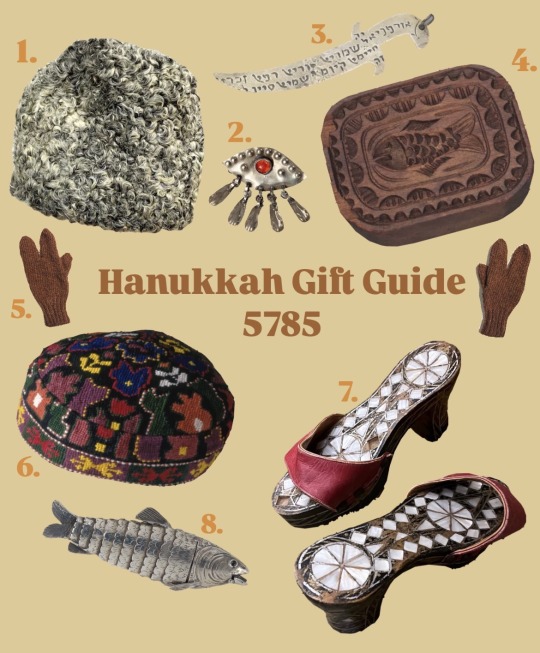
1. Astrakhan lambskin hat, late 19th century, Russian Empire
2. Evil eye amulet, early 20th century, Derbent, Dagestan
3. Amulet engraved with the names of angels, 19th century, Iran
4. Carved wooden pastry stamp, 19th century, Odesa, Ukraine
5. Cloven wool mittens for doing the Kohanic blessing (made by yours truly)
6. Embroidered skullcap, early 20th century, Uzbekistan
7. Mikvah clogs, circa 1900, Egypt
8. Silver spice box shaped like a fish, 19th century
1K notes
·
View notes
Text
no but genuinely I lose a little more patience for people who won't wear wool, leather, silk, or fur every day that I live in a world where plastic is increasingly the only damn kind of clothing you can find (or the only kind of fabric for sewing, even)
obviously, animal cruelty is horrible. I believe that even industries that rely on the deaths of animals should make their lives as good and their ends as humane as possible. and many of these industries need tighter environmental regulations on their production practices- some of the chemicals involved are highly toxic and ill-controlled at times
but at some point, you have to wake up to the fact that the only alternative we've found to date is destroying our planet
it's all plastic. and plastic is horrible for the world- the environment, humans, and especially animals. how cruelty-free is it to cause mass habitat loss? or climate change that disrupts food sources for those animals on a vast scale? how is that better than the deaths of a relatively small proportion of animals comparatively?
(and don't even start with "but pineapple leather! but cactus leather!" when those are still basically plastic due to heavy plastics use in their production processes. there is currently no non-plastic alternative to most animal-based textile products)
I've always tried to keep in mind that we all have to decide where our line is, that we all consume and there's no way of living in this world that doesn't take something from it. that for me, plastic clothing is to be avoided as much as possible, and for others, animal clothing products are to be avoided as much as possible. that the choice is equally valid
but I'm having a hard time seeing it as valid anymore when it just feels like trying to push the unpleasant part away from yourself so you can pretend your choice has no negative impacts. you're not wearing animal skin (or wool that an animal didn't even die to produce), so surely your way of doing things is better! no animals were harmed in the making of your outfit!
except. they were.
they and all the rest of us.
#fuck plastic#except for medical purposes#textiles#capitalist hellscape#(because companies use 'going cruelty-free' as an excuse to make their entire lineup a cavalcade of plastic)#textile waste#plastic waste#'just wear cotton or linen or hemp!' I mean I do but also#I live in New England#good luck with that when winter comes around#just bought a wool mantle with a fur-trimmed collar (yes it's vintage fur) from a friend and I fully expect to get use out of it soon#I just want to be able to buy Real Clothing (ie Not Plastic)#I can for now but. how much longer will I be able to?
1K notes
·
View notes
Text
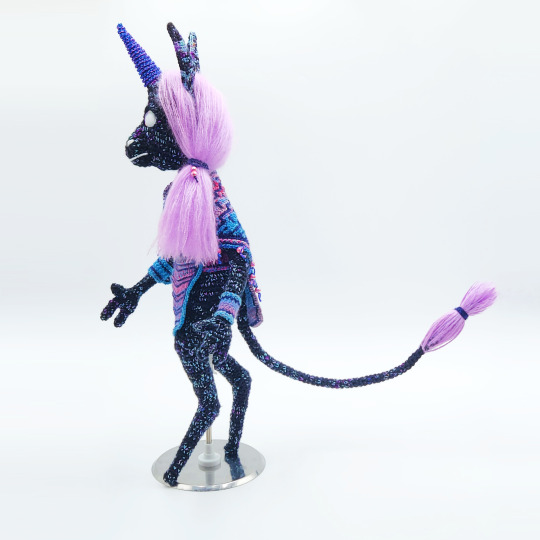


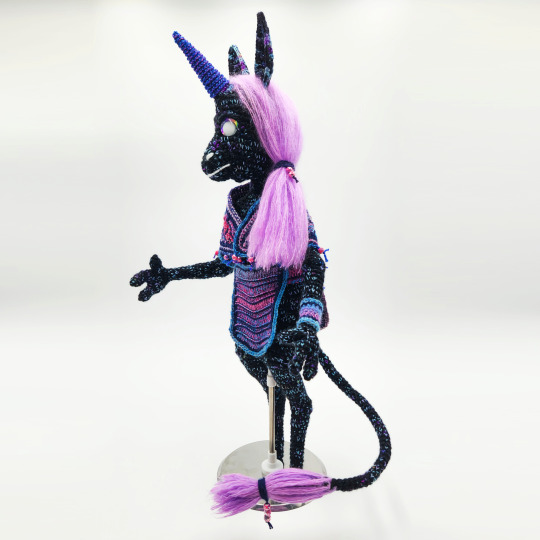



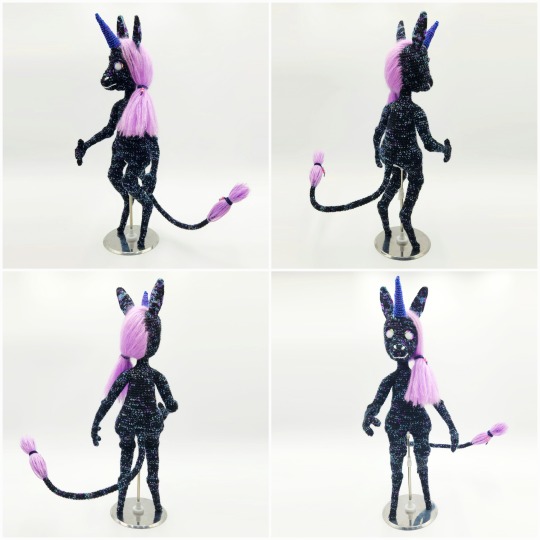
"No sorrow will live in me so long as that joy -- save one. And I thank you for that part, too."
#unicorn#fiber art#crochet#textiles#amigurumi#fantasy#xen makes frens#her name vapor b wave and she uses her cotton candy magic to bring people back from bad/scary trips
2K notes
·
View notes
Text
Something incredibly satisfying about knowing your craft and the confidence that goes with it. Just the casual “yeah I could make that”. Want a band tee? Yeah I can embroider my own with the lyrics I want. Bridesmaid dress too long? Yeah I can hem it. Need new slippers? Yeah I can crochet a pair (and give them bunny ears). And of course it’s not perfect but nothing beats that feeling of being able to craft your own solution with your own two hands
#this was prompted by watching nerdforge on YouTube#which I highly recommend they just made an office with a bed that moves as required because they wanted the space#and the “well we want this so we’re going to make it attitude#I aspire to#due to space and resources I’m stuck with limited textile arts but want to and will learn more#want to also sew my own clothes but see above re space#so doing mending and alterations for now which is still satisfying!!!#plus being able to make all your friends presents#rambles#crochet#embroidery#seeing#questwithambition
2K notes
·
View notes
Text
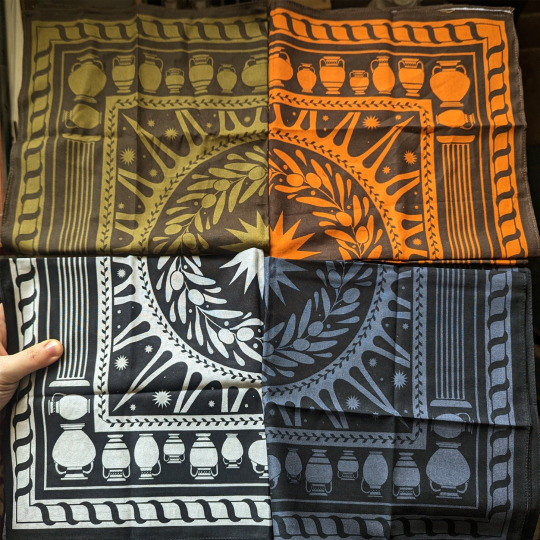


Hi friends, bandanas are here : )
#I also added new stickers and prints but.. i will post about that separately later i suppose#but.. this is my first time making anything textile.. so i hope it does okay#ty everyone#goodnight
1K notes
·
View notes
Text
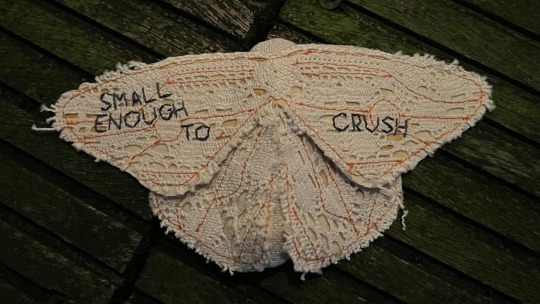
no one knows how much it hurts when a little thing dies. when a bug runs its fate is already decided. what made him know he could get away with hurting me? he made me small enough to forget i was ever a person. i forgot and forgot under his boot.
—insp by this post from @sweatermuppet
#the bottom layer is rust dyed! i had extra from doing that its so fun. also making a moth wing top rn but the pattern is driving me insane#and illustrating and drawing for class#so im picking up the pace on soft sculptures again to relieve stress lol#my headpieces also have moths on them! those are closer to done im excited#mine#chiara’s art tag#art#bugs#moths#soft sculpture#textiles#fiber arts#fiber crafts#sewing#insects
2K notes
·
View notes
Text
Reblog for a bigger sample size
#hand embroidery#cross stitch#craft poll#Intermittent Stitcher Poll#fibrecraft#textile art#fibre art#knitting#crochet#quilting#lace making#bobbin lace
693 notes
·
View notes
Text
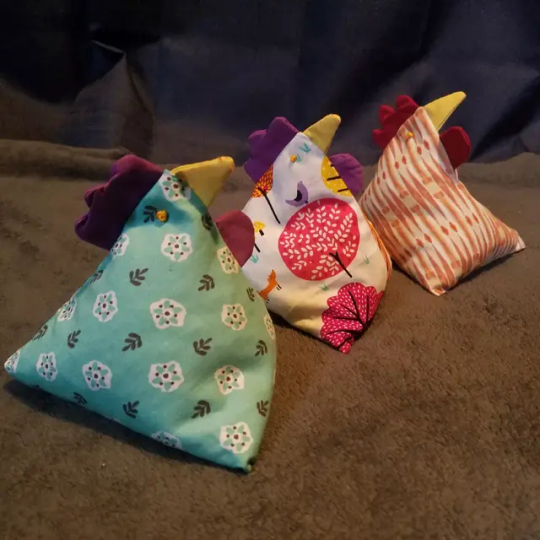
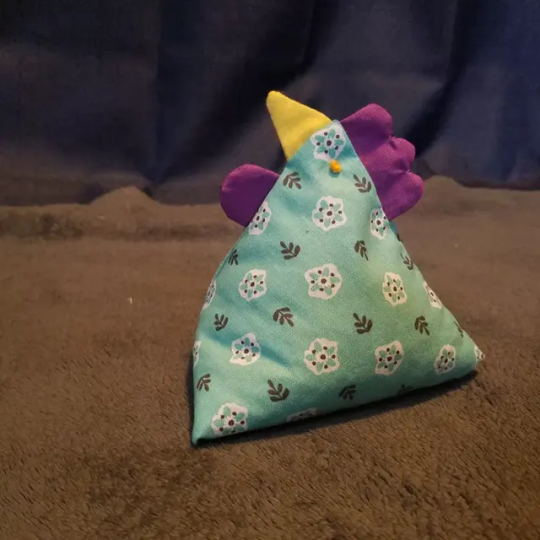

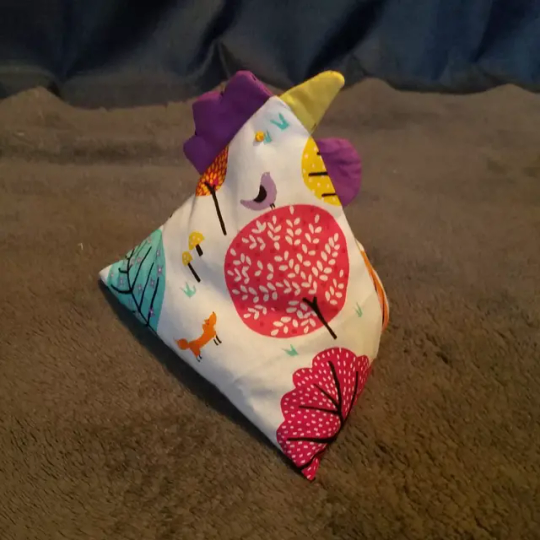
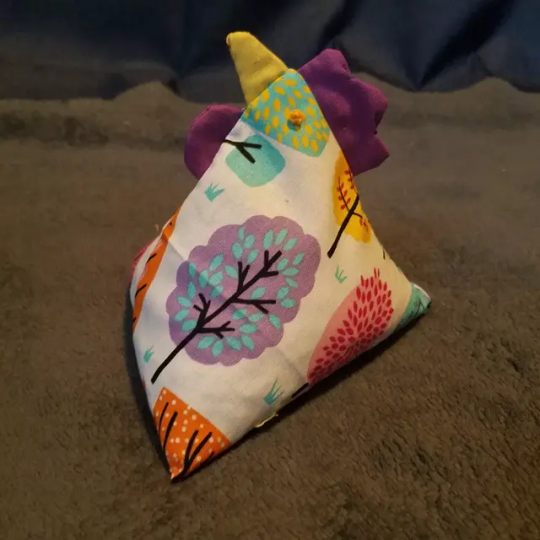

Forgot to post these simple little chicken hacky sacks/heat packs i made for my siblings for christmas. 100% cotton and filled with sunflower seeds (the chickens did NOT appreciate me borrowing from their stash but i was out of rice) so they can be heated up for hand warmers or to ease aches and pains
(or for balancing it on your head i guess)

#brother why#chickens#tiny fluffy dinosaurs#the BEST animals#chickenblr#sewing#hacky sacks#they are so easy to make#maybe I'll make a tutorial if i make some more#arts and crafts#textiles#makenna made a thing
1K notes
·
View notes
Text

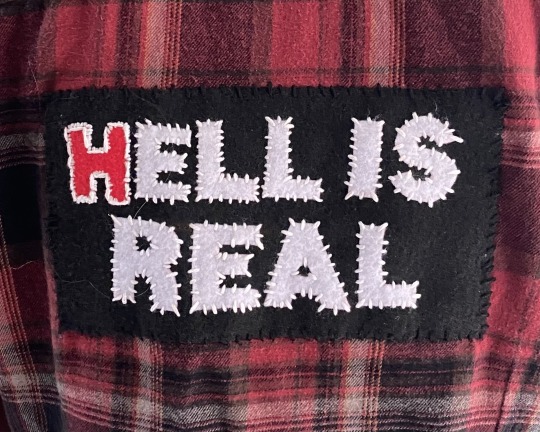

“hell is real” felt patch sewn onto an upcycled flannel. inspired by the ohio billboard
#fiber art#felt art#felt patch#patch#upcycle#textile art#texile#hell is real#ohio#artists on tumblr#theartofmadeline#im glad i finally did this even if its shitty lol#for my fellow ohio people#ive never used felt as a patch before but it was very fun!#ive been wanting to work with clothes more#please let this find the right audience lol#i would make more of these if anyone would buy them probs#fashion
3K notes
·
View notes
Text
My first yarn wig will always have a special place in my heart 🥰
#crochet#artist#crocheting#fiber art#yarn crafts#yarn#fiber artist#fiber crafts#cosplay#crochet cosplay#my crochet#my cosplay#my art#marie antoinette#historical fashion#crochet wig#wig making#wig#yarn ideas#crochet inspiration#cosplaying#cosplayer#rococo#textile art#fibre artist#fibre arts#craftblr#yarnblr#yarn art#artwork
1K notes
·
View notes
Text
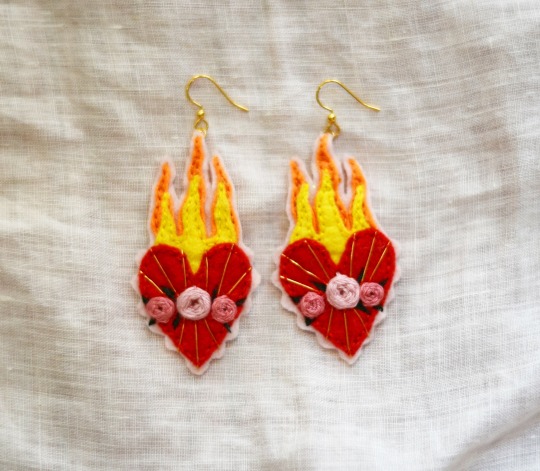

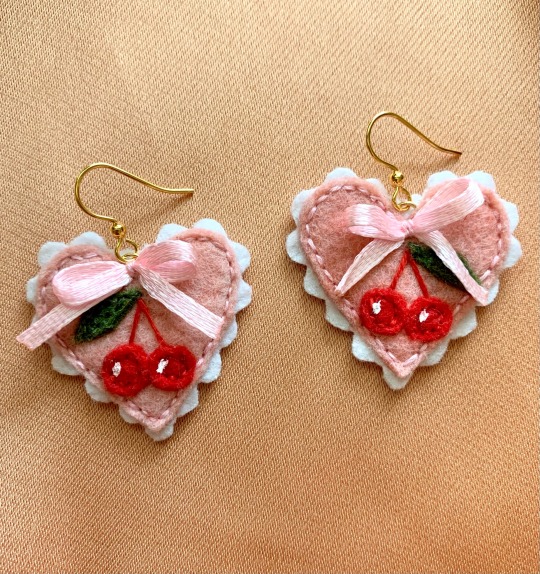
earrings i’ve made this year ❤️🍒
hand embroidery on felt with czech glass beads & gold plated hardware ✨
etsy
#i haven’t made earrings in months i should make more soon#mine#my art#art#textile art#fiber art#artists on tumblr#embroidery#hand embroidery#whimsigoth#slow fashion#jewelry#trinkets#hearts#cherries#lovecore#heartcore#heart aesthetic#earrings#fashion#pink#pink aesthetic#sacred heart
206 notes
·
View notes
Text
ooh i have GOT to finish this before the november furcon
#gotta glaze and glue in the teeth#do flower eyes and sew the neck and make an elastic harness to offset the weight#having 4 fursuit heads is healthy im thriving#fursuit#needlefelting#artists on tumblr#textile art#furry art#needlefelt
3K notes
·
View notes
Text

Wrought Iron ✢ Handmade Choker The design was inspired by gothic wrought iron fences. I tea dyed both the lace and cotton twill backing to match the cream needlepoint thread ^^
#I am planning on headdresses with this sort of design but its going to take me a long time to get those done lol#i would like to try making more designs like this though in addition to the text needlepoints ^^ i think it turned out quite cute#also ignore the weirdest coord ever in the product photos lol ive been so tired and i wanted to pair it with that vm dress but#couldnt find a matching blouse with a high enough collar lmaaooo#and i would prefer to keep the chokers and whatnot off of my skin as much as possible since theyre being sold#anyways long explanation for nothing. i think this choker turned out very cute#textile
205 notes
·
View notes
Note
how do you come up with the ways cultures in your setting stylize people/animals/the world in general in their artwork, i.e. jewlery, rock carvings, statues, etc? Each culture in your world seems to have a very unique "art style" and I love it a lot - makes them seem that much more 'real'. This is something I struggle with a lot in my own worldbuilding and I'd love to pick your brain if possible 😁
I think a starting point is to have a research process based in the material realities of the culture you're designing for. Ask yourself questions like:
Where do they live? What's the climate/ecosystem(s) they are based in? What geographic features are present/absent?
What is their main subsistence method? (hunter gatherer, seasonal pastoralist, nomadic pastoralist, settled agriculturalist, a mix, etc)
What access to broader trade networks do they have and to whom? Are there foreign materials that will be easily accessible in trade and common in use, or valuable trade materials used sparingly in limited capacities?
Etc
And then do some research based on the answers, in order to get a sense of what materials they would have routine access to (ie dyes, metal, textiles, etc) and other possible variables that would shape how the art is made and what it's used for. This is just a foundational step and won't likely play much into designing a Style.
If you narrow these questions down very specifically, (ie in the context of the Korya post- grassland based mounted nomads, pastoralist and hunter-gatherer subsistence, access to wider trade networks and metals), you can direct your research to specific real world instances that fit this general idea. This is not to lift culturally specific concepts from the real world and slap them into your own setting, but to notice commonalities this lifestyle enforces - (ie in the previous example- mounted nomadic peoples are highly mobile and need to easily carry their wealth (often on clothing and tack) therefore small, elaborate decorative artwork that can easily be carried from place to place is a very likely feature)
For the details of the art itself, I come up with loose 'style guides' (usually just in my head) and go from there.
Here's some example questions for forming a style (some are more baseline than others)
Are geometric patterns favored? Organic patterns? Representative patterns (flowers, animals, stars, etc)? Abstract patterns?
Is there favored material(s)? Beads, bone, clay, metals, stones, etc.
When depicting people/animals, is realism favored? Heavy stylization? The emotional impression of an animal? Are key features accentuated?
How perspective typically executed? Does art attempt to capture 3d depth? Does it favor showing the whole body in 2 dimensions (ie much of Ancient Egyptian art, with the body shown in a mix of profile and forward facing perspective so all key attributes are shown)? Will limbs overlap? Are bodies shown static? In motion?
Does artwork of people attempt to beautify them? Does it favor the culture's conception of the ideal body?
Are there common visual motifs? Important symbols? Key subject matters?
What is the art used for? Are its functions aesthetic, tutelary, spiritual, magical? (Will often exist in combination, or have different examples for each purpose)
Who is represented? Is there interest in everyday people? Does art focus on glorifying warriors, heroes, kings?
Are there conventions for representing important figures? (IE gods/kings/etc being depicted larger than culturally lesser subjects)
Is there visual shorthand to depict objects/concepts that are difficult to execute with clarity (the sun, moon, water), or are invisible (wind, the soul), or have no physical component (speech)?
Etc
Deciding on answers to any of these questions will at least give you a unique baseline, and you can fill in the rest of the gaps and specify a style further until it is distinct. Many of these questions are not mutually exclusive, both in the sense of elements being combined (patterns with both geometric and organic elements) or a culture having multiple visual styles (3d art objects having unique features, religious artwork having its own conventions, etc).
Also when you're getting in depth, you should have cultural syncretism in mind. Cultures that routinely interact (whether this interaction is exchange or exploitation) inevitably exchange ideas, which can be especially visible in art. Doing research on how this synthesizing of ideas works in practice is very helpful- what is adopted or left out from an external influence, what is retained from an internal influence, what is unique to this synthesis, AND WHY. (I find Greco-Buddhist art really interesting, that's one of many such examples)
Looking at real world examples that fit your parameters can be helpful (ie if I've decided on geometric patterns in my 'style guide', I'll look at actual geometric patterns). And I strongly encourage trying to actually LEARN about what you're seeing. All art exists in a context, and having an understanding of how the context shapes art, how art does and doesn't relate to broader aspects of a society, etc, can help you when synthesizing your own.
#I have a solid baseline because I like learning about history so don't do this like. Full research process every time. It's just the gist#of what the core process is.#I think I've gotten a similar question about clothing in the past that I never answered (sorry) so yeah this applies to that as well#Though that involves a heavier preliminary research end (given there are substantially more practical concerns that shape the#making of clothing- material sources they have access to (plant textile? wool? hide? etc). The clothing's protective purpose (does#it need to protect from the sun? wind? mild cold? extreme cold?). Etc#Also involves establishing like. Beauty conventions. Gendered norms of dress. Modesty conventions. Etc#I think learning about the real world and different cultures across history is like. The absolute most important thing for good#worldbuilding. And this means LEARNING learning. Having the curiosity to learn the absolute myriad of Things People Do#and Why We Do Them and how we relate to shared aspects of our world. The commonalities and differences. I think this is like...#Foundational to having the ability to synthesize your own rather than just like. copy-pasting concepts at random
351 notes
·
View notes